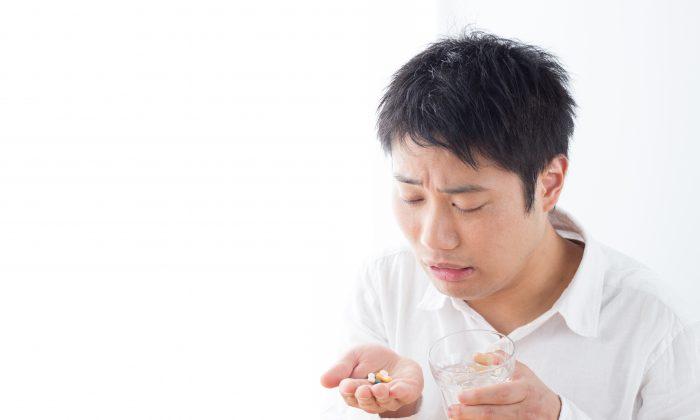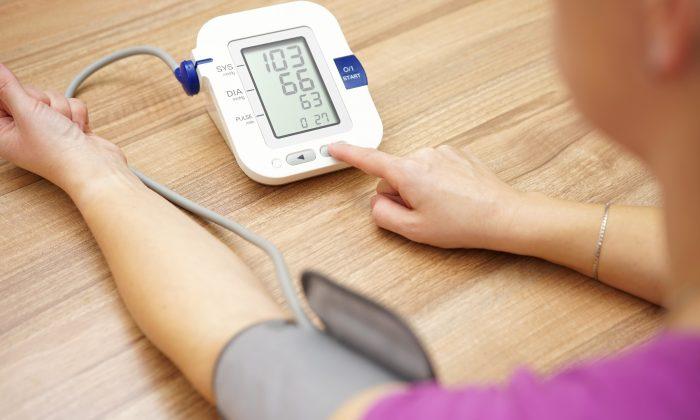Symptoms of Cerebral Apoplexy
- Loss of feeling in the arm or leg on one side of the body
- Dizziness and difficulty in maintaining balance
- Sudden loss of vision in one eye and double vision
- Difficulty in understanding others and in expressing oneself
- Inarticulate speech
Cerebral Infarction and Cerebral Hemorrhage
Cerebral apoplexy is divided largely into cerebral infarction, which manifests when the blood vessels become blocked, and cerebral hemorrhage, which manifests when the blood vessels are ruptured.Cerebral infarction is the result of arteriosclerosis (the narrowing of the internal diameter of blood vessels) and injuries in the internal walls of blood vessels, thereby causing blood clots. This is due to high blood pressure, diabetes, and hyperlipidemia (an elevation of one or more fat proteins in the blood).

Cerebral infarction also manifests when coagulated blood sediments within the heart (due to diseases such as atrial fibrillation) become detached and travel toward the brain, blocking the cerebral blood vessels.

Cerebral hemorrhage occurs due to the rupturing of blood vessel walls when they are unable to withstand the increased internal pressure. This increased internal pressure is caused by high blood pressure or when the cerebral artery is ruptured.
Types of Cerebral Apoplexy
Prevention and treatment are essential since stroke is a potentially fatal disease. Moreover, it is accompanied by a wide range of complications, including damage to the cerebral hemisphere and paralysis of the body on the opposite side, speech impairment, sensory impairment, intellectual disorder, and the like. The severity of these complications depends on the level of damage to cerebral tissues.Restoring the Resilience of Blood Vessels
A while ago, a gentleman in his 40s and his wife came to see me after hearing about me from a friend. He was in a wheelchair, and his wife was in tears. Her husband had a stroke at a young age, leaving him with paralysis in half his body. His condition had never improved.Shortly after I implemented pulmonary cleansing therapy, he began to exercise with a handgrip in the paralyzed right hand. After six months, he was able to walk up to the fifth floor of the building in which my clinic was situated. As soon as his condition improved to the extent of being able to write with his right hand, he started studying to get a license as a real estate agent.
After a year of the therapy, he was not only fully cured, but he also passed the examination.
Stroke is not an incurable disease. If the health of the cerebral blood vessels is restored, it is possible to completely rehabilitate stroke patients just as in my 40-year-old patient.
I have always considered prevention and treatment of diseases as the same in terms of their context. However, prevention can be achieved in a relatively short period of time, while treatment takes five to six times longer.
I treat stroke with the principle that the health of the heart improves when the health of the lung is improved, and that the heart—the superior organ in the cardiovascular system of the body—will restore the resilience of all the blood vessels in the body once it is made healthy.
Since the blood vessels supply nutrients to the nerve tissues, restoring the resilience of the blood vessels will improve cerebral edema, assist in the regeneration of brain cells and tissues, and prevent degeneration of paralyzed body parts. Paralysis of the body can be prevented only when the resilience of the blood vessels is restored. For this purpose, the pulmonary functions must be improved to their highest level.
If the heart becomes weakened and its pumping action becomes degraded, noxious substances circulating in the body through the blood vessels will easily accumulate on the internal walls of the blood vessels, turning the blood turbid (thick and cloudy) and leading to dizziness.
Having strong pulmonary function is key to having a healthy heart because the heart is the partner organ of the lungs. In general, the health of the tonsils, the barometer of the pulmonary health, improves after about two months of pulmonary cleansing therapy.
Once the cardiopulmonary functions improve, improvements in the health of the kidneys, the subsidiary organs of the lungs, can be achieved after four months of therapy. Bones will then become healthier, and the blood will also become cleaner and clearer, accelerating the recovery process.
The resilience of the cerebral arteriole will be restored after six months of pulmonary cleansing, and stroke patients will notice a rapid improvement.
Using a special medical device, we measured the age of the blood vessels of a 57-year-old patient who was suffering from pulmonary fibrosis, prior to undergoing pulmonary cleansing treatment with Korean herbal medicine. The age of his blood vessels was found to be 75 years old.
Following just six months of pulmonary cleansing therapy, the age of the blood vessels was measured again, and it was shown to be 51 years old—an amazing improvement of 24 years.
Pulmonary Cleansing
In addition, the causes of stroke, including high blood pressure, low blood pressure or arterial sclerosis, and so on, can also be prevented through pulmonary cleansing. Once the health of the lung, which governs breathing, improves, the health of the heart, which governs blood circulation and is the partner organ of the lung, will also improve.When our body weight increases by 22 pounds, an additional 12 miles of blood vessels are generated. A reduction in the body weight by 22 pounds will eliminate 12 miles of blood vessels, and it is the heart that controls such fluctuation in the extent of the distribution of blood vessels in the body.
As the vitality of the heart, the governing organ of the blood vessels, improves, this improvement is fully passed onto all the blood vessels to restore their resilience so that the blood pressure is maintained at a normal level.
When hemorrhage occurs due to the rupturing of blood vessels, and one is taken to the emergency ward, hemorrhagic spots will be discovered. In the case of hemorrhage in the important area of the cerebellum, the hospital will advise the patient that hemiplegia (paralysis of one side of the body) is inevitable and that one must seek recovery through exercise once the symptoms enter a stabilization phase.
However, those who took Korean herbal medicine for pulmonary cleansing for more than six months will be able to recover from hemiplegia quickly, the hemorrhagic spots being the first to disappear.
When the leukocytes have been fortified through pulmonary cleansing, they can completely eliminate the hemorrhagic spots. As long as the ability of leukocytes to identify undesirable foreign matter in the body is kept at its highest level, it is possible to completely cure any disorders that result from cerebral hemorrhage.
I have the testimonies of five patients who were completely cured of stroke complications. Western medical doctors will find these results hard to believe. In Western medicine, patients become enslaved to drugs. They are told that they need to take drugs for the rest of their lives in order to adjust their blood pressure.
However, by strengthening immunity and enabling the body to adjust the blood pressure on its own, there will be no need to take drugs. Once the cardiopulmonary system becomes healthier through pulmonary cleansing and the resilience of the blood vessels is restored, it is possible for you to live in great health without relying on drugs.







Friends Read Free